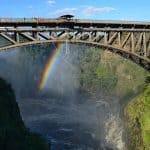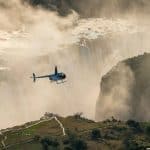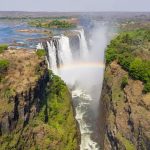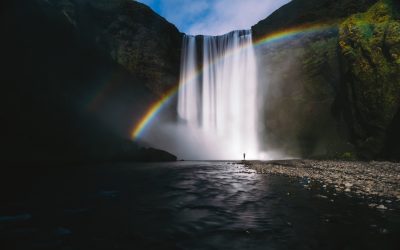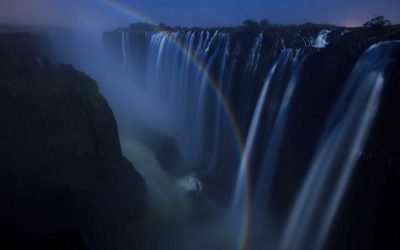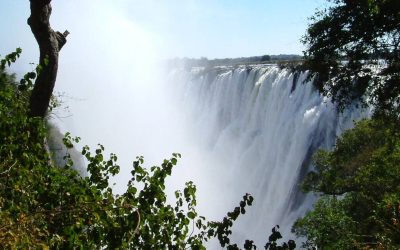Table of Contents
Guide to the weather in Victoria Falls, Zimbabwe
Victoria Falls weather is a factor in determining the best time to visit this beautiful destination. Factors affecting weather conditions in the Victoria Falls area include temperature, cloud cover, and precipitation.
For best viewing conditions, days with clear skies and a perceived temperature between 75degF and 90degF are ideal.
The optimum period for tourism to Victoria Falls is early September through late October, with the best conditions during the last week of September.
The average daily maximum UV index in Victoria Falls
When travelling to areas with high levels of UV radiation, it’s important to know how to protect yourself. While UV radiation can have health benefits in moderation, too much exposure can damage skin, DNA, and eyes. The UV index is a useful way to estimate how much ultraviolet radiation you will be exposed to. This index is calculated using a computer model that takes several factors into account, including solar zenith angle, elevation, snow/ice reflectivity, and cloud transmission.
The average daily maximum UV index in Victoria Falls is six. The number six means that the UV rays in the area are high enough to pose a health risk. If you are travelling to Victoria Falls during the hot season, be sure to pack sunscreen and an umbrella. It’s also important to remember that humidity levels can be high in this region.
In February, the average temperature in Victoria Falls is eighty-five degrees Fahrenheit and seventy-three degrees Fahrenheit. However, temperatures can vary widely from year to year. The average maximum in 2015 was ninety-seven degrees Fahrenheit, while the average low was 63 degrees.
In January, the average number of hours of sunlight was five hours. The lowest UV index in Victoria Falls occurred in December and January. A UV Index of two or fewer is considered a minimal health risk. If you’re not planning on working outdoors, you should consider wearing sunscreen. It’s also recommended to use sunscreen if you’re spending a long time outdoors.
The average UV index in Victoria Falls is six. During the month of July, you can expect temperatures to be between twenty-five and thirty-seven degrees. The highest UV index is recorded in July, while the lowest is in December. It is warm and dry at this time of year. However, the landscape becomes brown and the heat can be harsh.
The Victoria Falls Airport has significant seasonal variations. From August 14 to November seventeen, the area is most windy, with an average wind speed of 8.9 miles per hour. However, the calmest month is February. If you’re travelling to Victoria Falls in October, you may be surprised at the number of days that are muggier.
A good time to go outside is during late autumn and winter when the sun is less intense. During these months, the UV Index will be low, meaning you don’t need to wear sun protection. However, it’s still recommended to use sun protection when the UV Index is three or higher. Also, be sure to get plenty of physical activity. By getting physical, you will boost your vitamin D levels as well.
Average monthly rainfall in Victoria Falls
If you want to visit Victoria Falls during the summer, it’s important to know the average rainfall. During this time, the city can experience both very humid and very dry conditions. The most humid months in Victoria Falls are September and January, with the lowest rainfall being in August. During these months, temperatures are warm and the humidity is high, while December and January are cooler and dry.
For the rest of the year, the average rainfall in Victoria Falls is 690 millimetres. The wetter part of the year is from November 16 to March 24. From this time, there is a greater than 28% chance of wet days. January has the highest average of wet days, with an average of 16.4 days with at least 0.04 inches of rain. Meanwhile, July is the driest month, with fewer than three days of significant precipitation.
Aside from the rainfall, the temperature and cloud cover are also important factors in the overall weather in Victoria Falls. The climate in this region is best when temperatures range from seventy-five degrees Fahrenheit to ninety degrees. The best time to visit the waterfalls is from early September to the end of October when temperatures are above 90 degrees Fahrenheit.
The climate in Victoria Falls is not subject to daylight saving time, and will not observe it in 2022. The map below shows the average rainfall in Victoria Falls over a 31-day period, with 25th and 75th percentile bands. Snowfall is also not uncommon. The length of the day in Victoria Falls varies year-round. In June, the day is the shortest, and the longest is December 21. The colour bands on the climate map indicate full daylight, twilight, and night.
The average temperature in Victoria Falls is 38.5 degC (101 degF). In October 2011, the temperature reached 41 deg. During the month of October, the average rainfall was 25 mm (one inch). The average day lasts 12 hours 30 minutes, with nine hours of sunshine and about 33% humidity. Wind speeds are ten knots (6 mph).
The average monthly rainfall in Victoria Falls varies from season to season. The wettest areas are those that are closest to Harare and the Zambian border. During the dry season, there is little rainfall, and most wildlife gathers around waterholes. During this period, temperatures are lower and more moderate, which means the weather is dry. If you’re visiting Victoria Falls during this time of year, you’ll need to pack an umbrella, sunscreen, and other waterproof clothing.
The average monthly temperature in Victoria Falls
The average monthly temperature in Victoria Falls varies depending on the season. From April to November, temperatures range from 18degC/64degF in the morning to 32degC/90degF in the afternoon. Parks located in the central highveld plateau will be colder than those in lower-lying areas. From December to March, the temperature averages around 30degC/86degF.
The climate in Victoria Falls is moderately wet throughout the year. Rain falls on an average of 16.5 days a year. This average does not include trace amounts, which occur only once in a very small number of days. In August, temperatures average around thirty-five degrees F and have a high of over 50degF. In September, the average high temperature in Victoria Falls is around thirty-one degrees F.
Winters in Victoria Falls are relatively mild and dry. Low temperatures range between seven and ten degrees Celsius. Visitors to the area should take note of the Victoria Falls Calendar to understand how the seasons affect the climate. In the summer, visitors should dress in layers and bring a raincoat or umbrella in case the weather turns unseasonably wet.
The average monthly temperature in Victoria Falls is thirty-five degrees Celsius. It reaches a maximum of forty-one degrees in October. The average day lasts around thirteen hours and ten minutes. The average amount of rainfall is 25 millimetres, or about one inch, spread over four days. There is a slight variation in temperatures, with lower-lying parks being warmer than higher-lying areas. On the other hand, the dry season, which lasts from April to October, brings little or no rain. Animals tend to concentrate around waterholes during this time of year.
The average monthly temperature in Victoria Falls varies throughout the year, from warm summers to cool winters. However, the fall season has an unseasonably high humidity level. As a result, Victoria Falls can be difficult to photograph. In addition to the misty mist, visitors will be unable to get a clear shot of the falls.
With climate change, the flow of Victoria Falls may be more unpredictable, and tourism may need to adapt. In the meantime, tourists can still enjoy white water rafting or swim in the Devil’s Pool. This is a good option for low-flow seasons. The average monthly temperature in Victoria Falls may be impacted in the future.


